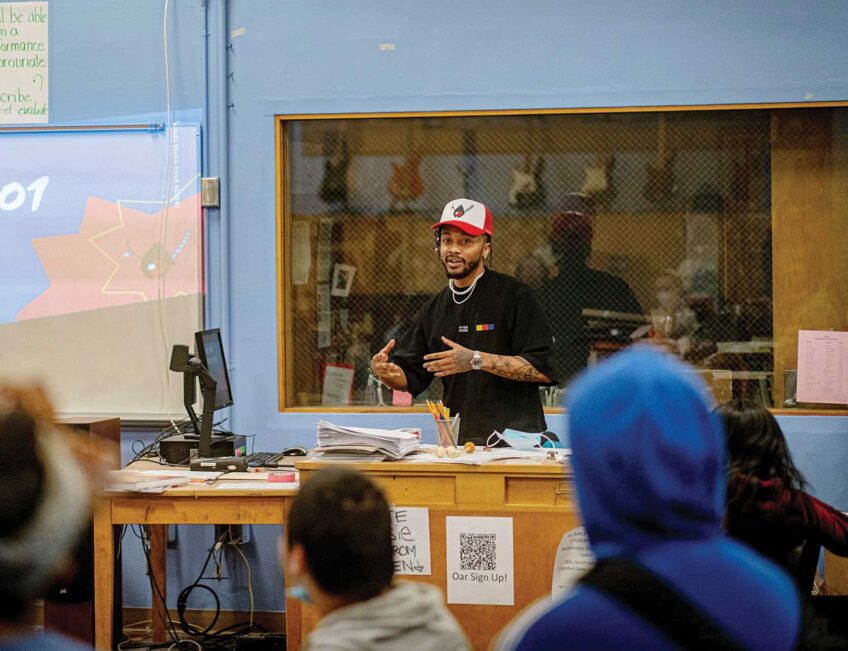Art project to memorialize lives of slain Rox. women
Installations recall 10 women slain in 1979, recall artistic movement spurred by murders

Between January and May 1979, 11 black women were murdered in Roxbury within several miles of one another. These deaths were unrelated, occurring in varying circumstances by different perpetrators, but the string of violence incensed many, including a local group of black feminists. Now, Kendra Hicks, a Roxbury native and community organizer, is turning this painful piece of the neighborhood’s history into public art installations called The Estuary Projects.
Inspiration
Hicks became aware of the 1979 Roxbury murders when she was younger, but recently reignited her interest in the story. Currently working on her thesis on radical urban pedagogy at Goddard College, a low-residency college in Vermont, and with the 40th anniversary of the murders approaching, Hicks has been researching and visiting each location where each woman was found, since December of last year.
According to the Estuary Projects Kickstarter page, on which $1,503 of the $7,500 goal has been raised so far, the installations will be sited on or in the vicinity of the spots where the 11 murder victims were found. The installations will serve to honor the women and their stories.
“Eleven black women were murdered here, that’s not something that’s common knowledge,” says Hicks. “It’s a piece of missing history for us — what we’ve been through and what we’ve learned.”
Those 11 women are: Christine Ricketts, 15; Andrea Foye, 17; Gwendolyn Yvette Stinson, 15; Caren Prater, 25; Daryal Ann Hargett, 29, Desiree Denise Etheridge, 17; Darlene Rogers, 22; Lois Hood Nesbitt, 31; Valyric Holland, 19; Sandra Boulware, 30; and Bobbie Jean Graham, 34.
At least four different men were charged in connection with some of the murders, while the rest have remained unsolved.
In 1977, the Combahee River Collective, a Black feminist lesbian organization active in Boston from 1974 to 1980, created the Combahee River Collective Statement, considered by scholars as one of the foundational documents of contemporary black feminism and intersectionality. The collective responded to and organized around the 1979 murders, of which there were 12 in total, one of them being a white woman in Roxbury.
“There’s a sense of despair and urgency to how we respond to the issues we’re experiencing now such as gentrification, police brutality, gun violence, school closures,” says Hicks. “The purpose of the installations is to remind people that at one time in this neighborhood, we’ve experienced things that felt like the end of the world, but people came together then to devise solutions.”
The word “estuary” signifies where a river stream meets the ocean tide, and in this project symbolizes how the endings of the women’s lives in Roxbury can serve as “entryways to the creation of a new world,” the project’s Kickstarter page reads.
Construction
According to Hicks, each installation will be life-sized, the tallest being an eight-foot tall silhouette of a woman. Another will be a meditation box made of wood that people will be able to sit inside. Another will be located in a tree that overlooks the spot where one of the women was murdered.
The installations are mixed-media structures and will be integrated into their locations. “One of the centerpieces of the installations are flowers because from what I’ve learned, life blooms in unlikely places,” says Hicks
A team of volunteers will be recruited in the new year to help put the installations in their designated locations.
The first installation, in which two of the victims were found dead together, will go live on Jan. 29, 2019. There will be 10 installations in total.
In conducting her research, Hicks requested archived articles from The Banner, and scoured the Boston Globe archives to piece together the women’s names, ages and stories. “I’ve been walking around the neighborhood and talking to people about it too, to see if they were around at the time,” says Hicks. “The main thing I’m trying to do right now is to see if the women have any remaining family members or friends who knew them.”
Last January, Hicks and a friend put up an altar at one of the murder locations, which happens to be close to Rosie’s Place, a women’s shelter. A couple of women walked up to the pair and asked them what they were doing. “They talked to us outside for 20 minutes, in the middle of January. They were around at the time [of the murders] and remembered it,” says Hicks. “The conversation went beyond remembering these women. We also spoke about how some of the conditions are being mirrored today in which young men and women are also being murdered.”
Hicks says she hopes to continue these types of conversations with The Estuary Projects. “It’s about remembering these women and making the connection from then to now,” she says. “It’s a way of saying, ‘Look what came out of it.’ In even disastrous times, fertile soil is created to build a new world.”






